Recommended
Categories
Reprinted Articles
Play Piano - How to Play Piano By Ear |
|---|
| by Ronald Worthy |
|
Training your ear is much the same as training your dog: you keep shouting orders at it until it recognizes what a certain sound means. For example, if someone sat at your piano and kept playing major chords without interruption for two straight days, you would no doubt recognize a major chord any time one sounded during the remainder of your life! Or you might have the same dedicated friend strike nothing but major thirds: C and E, D and F#, F and A, etc. And the next time you heard your car horn you would probably exclaim, "Hey! It's a major third." (Most car horns are "factory-tuned" to a major third.) Once your ear is trained to decipher certain sounds, you can pretty much drive all of those around you to a padded cell with your recognitions. "Hear that train whistle? It's a perfect fourth!" Or when a car horn passes you on the highway producing the sliding Doppler effect: "That car just produced a tritone portamento descending!" In spite of that, many of you have written requesting some tips on how to play piano by ear, so here it goes: The first order of business is to find that friend who will sit and pound out the sounds for you. The best one that we can recommend is your tape recorder, or a cassette recorder. It should have a numerical counter on it so you can rewind to a specific spot accurately. (Thanks to the electronic age we live in, we can all become better musicians than would have been possible some years ago.) The tape recorder should be set up on a table close enough to your instrument so that you can operate it with the least amount of hassle. You now must record a series of sounds, which you wish to learn. The question is whether to start learning melodic intervals, chords, rhythms, and chord progressions, whatever. Most teachers would recommend starting with melodic intervals such as skips of a major third, a perfect fifth, major sixth, etc. For example, the first two notes of "Here Comes the Bride," is a perfect 4th. In the Key of C, the notes would be C to F! In the Key of F, the notes would be: F to Bb. But I personally feel, you should start with chord progressions. It is a lot more fun, and gets you right into the "mix" immediately. You can train your ear in melody easily enough by continually picking out melodies of songs on the piano. The operative word is continually. And later on in your tape recorder exercises you can record easy melodies, which you will later take as musical dictation. So if you want to start playing piano by ear, just practice and study very simple chord progressions. But before recording any progression, I advise you to record the tonic note. (The first note of the scale) For example, if you are playing a progression in the Key of C, record the single note C followed immediately by the progression. This will orient you to a "home base" and make things a lot easier. Copyright 2005 RAW Productions About The AuthorRonald Worthy offers additional instruction at: http://www.mrronsmusic.com and http://www.playpianotonight.com |
Recommended Stuff
Beginner Piano:
| Learn Songs - Learn 3 Easy Songs, free Virtual Piano provided |
| Chords - Learn how to construct Major Chords, Primary Chords & more |
| Music Theory - Key Signatures, Major Scales, Intervals & more |
| Improvisation - Chord Inversions, and different Chord Patterns |
| Techniques - Pentatonic Scale, Whole Tone Scale, Arpeggio |
Free Piano Reference
Music Terms Glossary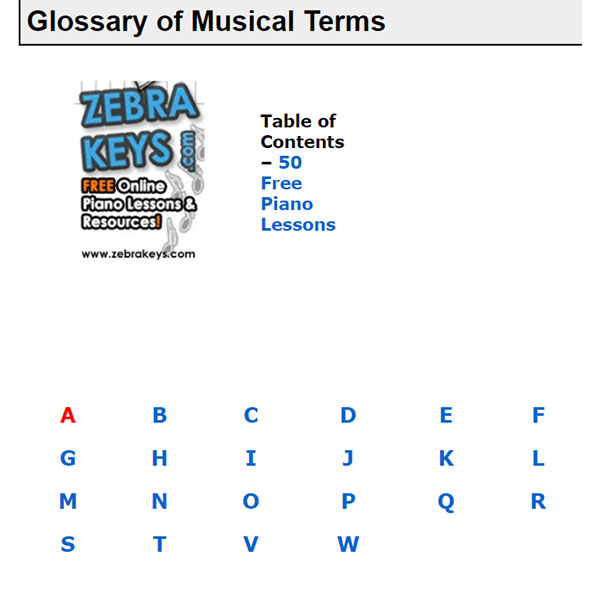 |
FIND any CHORDS using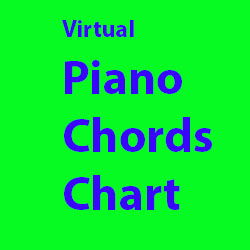 |
Music Notation Chart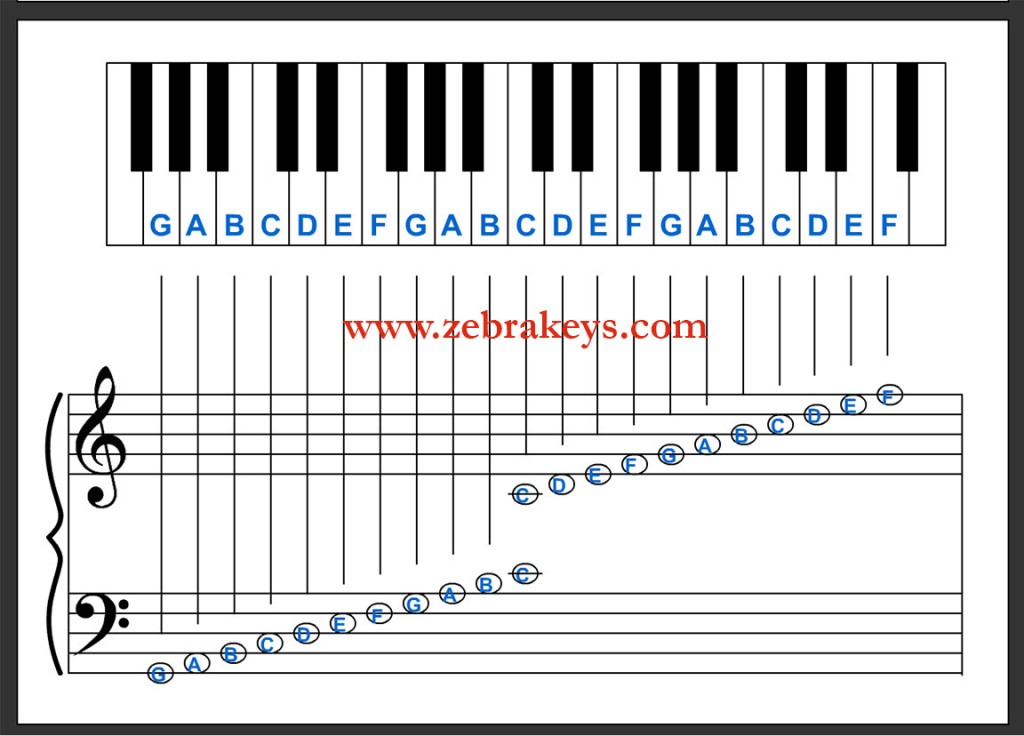 |
| TRANSLATE this content |
| Beginner Piano | | | Intermediate Piano | | | Advanced Piano |
|
List of 50 Free Lessons
Piano Basics 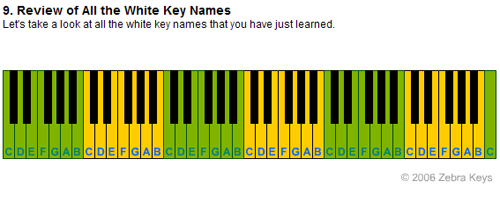 Lesson 1 - Patterns of Piano Keyboard Lesson 2 - Names of White Keys Lesson 3 - Names of Black Keys Lesson 4 - Grand Staff Lesson 5 - Note Durations |
Use our free Virtual Piano Keyboard in conjunction with these free lessons:
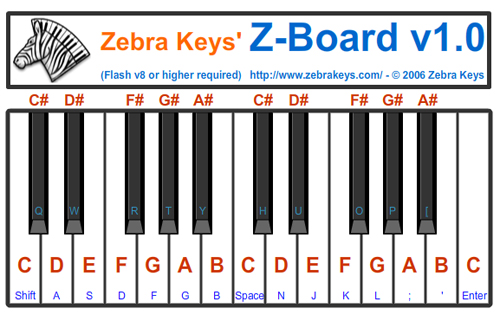 |
|
Beginner Piano Lesson 6 - Brother John Lesson 7 - London Bridge Is Falling Down Lesson 8 - Twinkle Twinkle Little Star |
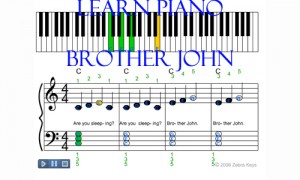 |
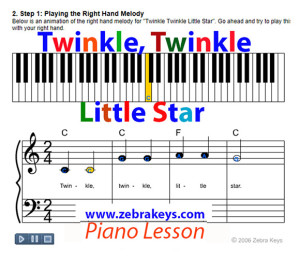 |
| Lesson 9 - Major Chord |
|
FIND any CHORDS using Free Virtual Piano Chord Chart 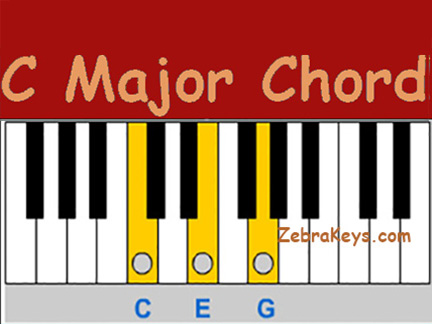 |
|
Lesson 10 - Three Primary Chords Lesson 11 - 12 Bar Blues Chord Progression |
| Lesson 12 - 12 Keys of Music |
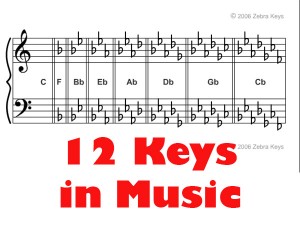 |
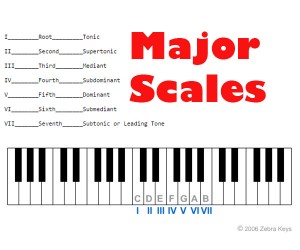 |
|
Lesson 13 - Major Scale
Lesson 14 - Musical Intervals Lesson 15 - Chords of the Major Scale Lesson 16 - The Circle of Fifths |
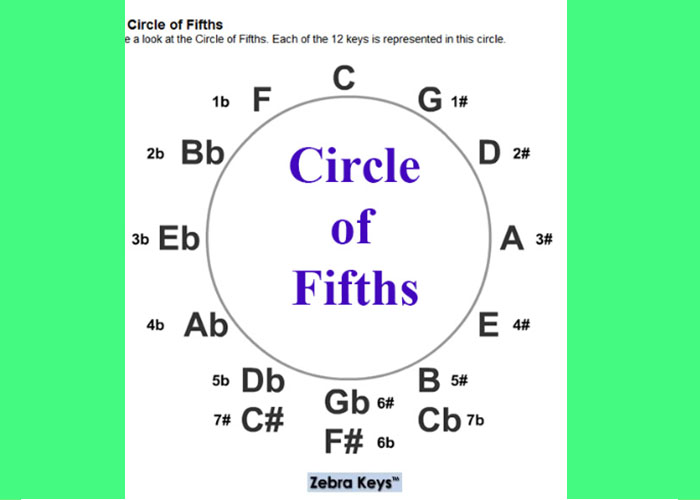 |
|
Lesson 17 - Chord Inversions Lesson 18 - Double Chord Pattern Lesson 19 - Broken Chord Pattern Lesson 20 - Arpeggio Chord Pattern Lesson 21 - Sounds of the Orient (Pentatonic Scale) Lesson 22 - Mysterious Sounds (Whole Tone Scale) Lesson 23 - Arpeggios |
|
Intermediate Piano Lesson 24 - America (My Country Tis of Thee) Lesson 25 - Silent Night Lesson 26 - God Rest Ye Merry Gentlemen |
|
Lesson 27 - Minor Chord Lesson 28 - Three Secondary Chords Lesson 29 - Dominant 7th Chord Lesson 30 - Major 7th Chord Lesson 31 - Minor 7th Chord Lesson 32 - Natural Minor Scale Lesson 33 - Chords of the Natural Minor Scale |
|
Lesson 34 - Melody as Octaves Lesson 35 - Root Chord Pattern Lesson 36 - Harmony Notes Lesson 37 - Major Chord Inversions Lesson 38 - Chord Inversion Straddles |
|
Advanced Piano Lesson 39 - The First Noel (Flash demo version) Lesson 40 - Auld Lang Syne Lesson 41 - Hark! The Herald Angels Sing |
|
Lesson 42 - Diminished Chord Lesson 43 - Augmented Chord Lesson 44 - 6th Chords Lesson 45 - Sus2 Chords Lesson 46 - Sus4 Chords Lesson 47 - Major 9th Chords Lesson 48 - Major 11th Chords Lesson 49 - Major 13th Chords Lesson 51 - Blues Scale |






